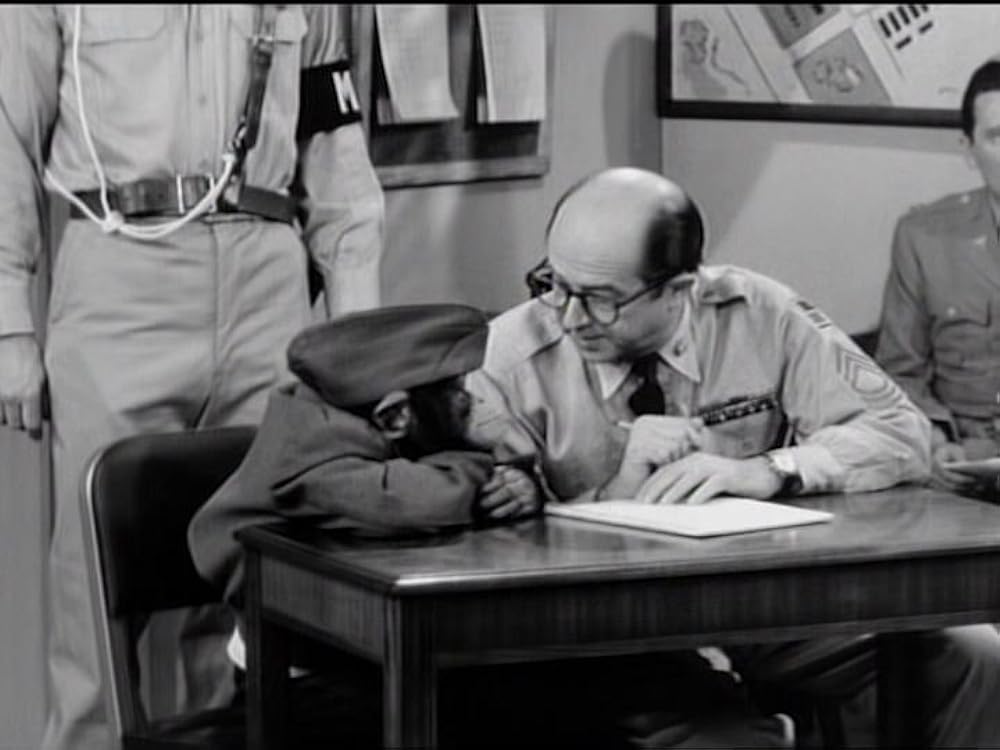You are using an out of date browser. It may not display this or other websites correctly.
You should upgrade or use an alternative browser.
You should upgrade or use an alternative browser.
Best Episodes of Famous TV Series
- Thread starter SWC75
- Start date
SWC75
Bored Historian
- Joined
- Aug 26, 2011
- Messages
- 32,600
- Like
- 62,861
I LOVE LUCY 2/7/55 ‘L. A. At Last!’ aka ‘Hollywood at Last!’
Nothing topped I Love Lucy in the rating s in the 1950’s. It was #1 in the ratings from 1952-57 when Lucy and Desi decided to cut down on their workload and do occasional hour-long shows. Their 1953 show depicting the arrival of Lucy’s baby, (which was about to happen in real life) was the first TV broadcast to be ranked as “the most watched show in history”. The Arnazs were smart enough to film their show in Hollywood and retain ownership of the episodes after they were broadcast over the networks so they could syndicate them to local stations. When I was growing up, you could watch I Love Lucy several times a day if you wanted to. They got so rich they bought the studio they were filming in, re-named it DesiLu and produced such famous shows as The Untouchables, Star Trek and Mission: Impossible.
There are many, many hilarious episodes of the show but for my money, the funniest is the William Holden Episode from 2/7/55. The Ricardos and the Mertzes are visiting L.A. and decide to dine at the famous Brown Derby Restaurant. I love the scene where Lucy is staring so much at William Holden in an adjacent booth that he decides to turn the tables and stare at her. Later, Holden visits Ricky in their hotel suite, not realizing that the woman he had the confrontation with in the restaurant is Ricky wife. Lucy decides to disguise herself to avoid further embarrassment - with comically disastrous results. She’s applied a fake nose and manages to set it on fire when she tried to light a cigarette for him.
This episode was rated a 8.6 on a scale 10 by IMDB users. I’ve never seen such a high rating for anything.
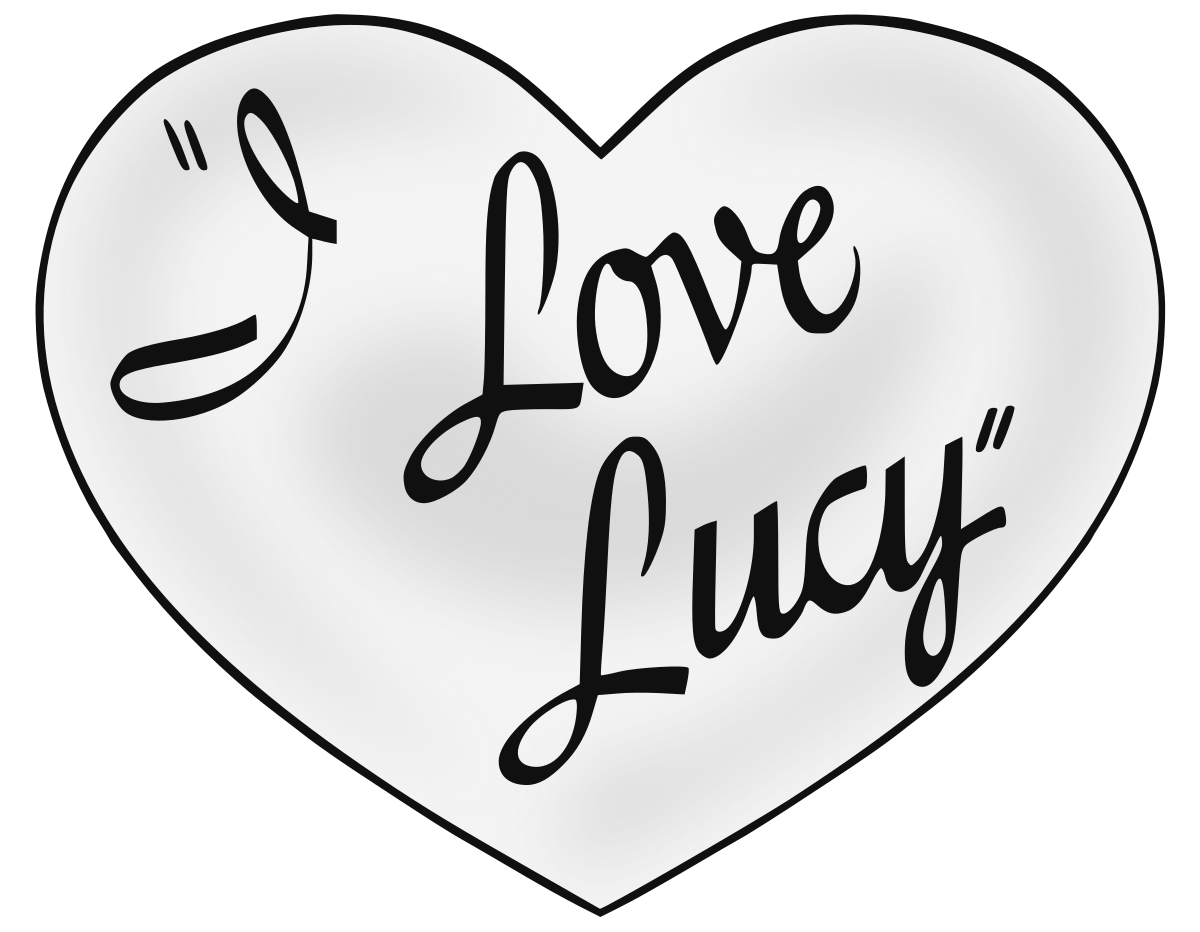
 en.wikipedia.org
en.wikipedia.org
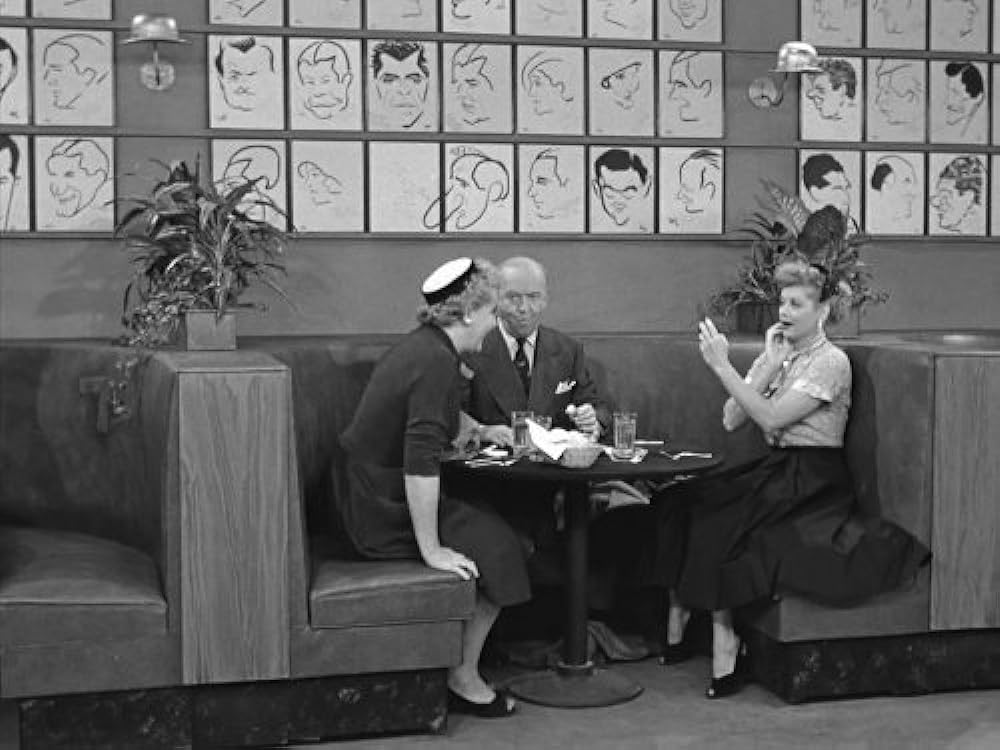
You-Tube doesn’t have the whole episode but it does have significant clips.
A good review with still pictures:
Here is a colorized version of the ‘nose’ scene:
I LOVE LUCY - Lucy Meets William Holden - In Color
Nothing topped I Love Lucy in the rating s in the 1950’s. It was #1 in the ratings from 1952-57 when Lucy and Desi decided to cut down on their workload and do occasional hour-long shows. Their 1953 show depicting the arrival of Lucy’s baby, (which was about to happen in real life) was the first TV broadcast to be ranked as “the most watched show in history”. The Arnazs were smart enough to film their show in Hollywood and retain ownership of the episodes after they were broadcast over the networks so they could syndicate them to local stations. When I was growing up, you could watch I Love Lucy several times a day if you wanted to. They got so rich they bought the studio they were filming in, re-named it DesiLu and produced such famous shows as The Untouchables, Star Trek and Mission: Impossible.
There are many, many hilarious episodes of the show but for my money, the funniest is the William Holden Episode from 2/7/55. The Ricardos and the Mertzes are visiting L.A. and decide to dine at the famous Brown Derby Restaurant. I love the scene where Lucy is staring so much at William Holden in an adjacent booth that he decides to turn the tables and stare at her. Later, Holden visits Ricky in their hotel suite, not realizing that the woman he had the confrontation with in the restaurant is Ricky wife. Lucy decides to disguise herself to avoid further embarrassment - with comically disastrous results. She’s applied a fake nose and manages to set it on fire when she tried to light a cigarette for him.
This episode was rated a 8.6 on a scale 10 by IMDB users. I’ve never seen such a high rating for anything.

I Love Lucy - Wikipedia

You-Tube doesn’t have the whole episode but it does have significant clips.
A good review with still pictures:
Here is a colorized version of the ‘nose’ scene:
I LOVE LUCY - Lucy Meets William Holden - In Color
I go out for a quart of milk and come back to my son treating his body like an amusement park.Seinfeld - The Contest
SWC75
Bored Historian
- Joined
- Aug 26, 2011
- Messages
- 32,600
- Like
- 62,861
THE HONEYMOONERS 4/23/55 “Boys And Girls Together”
When people talk about The Honeymooners, they usually think of what is known as “The Classic 39” but there is much more to The Honeymooners than those episodes. It’s more like “The Classic 232”:
 en.wikipedia.org
Most of the 1960’s episodes were remakes of episodes that were originally done in the 1950’s, as sketches in ‘The Jackie Gleason Show’, which originated on the Dumont Television network, (which went out of business in 1955), in 1950 under the title “Cavalcade of Stars” and switched to CBS in 1952 and lasted to 1957. There were 130 such sketches from 1950-1955 and 1956-57. The Classic 39 was a half-hour filmed situation comedy based on those sketches that ran from 1955-56. Those were actually the least-watched Honeymooners episodes of the 1950’s but because they were filmed instead of just being broadcast live, those episodes were available for syndication and thus became the most famous Honeymooners episodes. They are all a lot of fun and several are, indeed ‘classics’. But I do not think that they were, as a group, the best episodes of 1950’s Honeymooners.
en.wikipedia.org
Most of the 1960’s episodes were remakes of episodes that were originally done in the 1950’s, as sketches in ‘The Jackie Gleason Show’, which originated on the Dumont Television network, (which went out of business in 1955), in 1950 under the title “Cavalcade of Stars” and switched to CBS in 1952 and lasted to 1957. There were 130 such sketches from 1950-1955 and 1956-57. The Classic 39 was a half-hour filmed situation comedy based on those sketches that ran from 1955-56. Those were actually the least-watched Honeymooners episodes of the 1950’s but because they were filmed instead of just being broadcast live, those episodes were available for syndication and thus became the most famous Honeymooners episodes. They are all a lot of fun and several are, indeed ‘classics’. But I do not think that they were, as a group, the best episodes of 1950’s Honeymooners.
The genesis of the skits was that Gleason wanted to depict what happens before, during and after an argument between the couple, which every neighborhood had, who were always arguing but always seemed to kiss and make up. They must have been truly in love so their marriage was a perpetual ‘honeymoon’, as the introduction to the first episode says. The first couple of years, the skits were 10 minute segments of a variety show that also included Reggie Van Gleason, the Pour Soul, Joe the Bartender and other Gleason characters, as well as separate musical numbers and guest stars, etc. Then they started to experiment with longer episodes, even ones that took up the whole hour, (meaning that they lasted 35-45 minutes with the rest going to an opening monologue, commercials and closing credits). The Honeymooners didn’t appear constantly but with increasing frequency until they mostly took over the show.
The longer shows naturally had to have full-fledged plots, not just arguments, with multiple scenes. Situations that can be seen in many of the 10 minute sketches were expanded into the 45 minute plots and themes were woven into the show: Ralph is a frustrated man in a difficult job who dreams of being a big, important man or a great financial success. But his dreams never come true. His wife, Alice is always dubious of his big ideas, (which causes the arguments to still be a big part of the series), but she’s there to catch him when he falls and reassure him they still have their love and that that’s all that matters – something he has to conveniently forgot in time for the next episode. Ed Norton starts out as a wacky neighbor and becomes a full-fledged co-star and (not always willing) partner in Ralph’s schemes and misadventures.
In the Dumont days, Alice was played by gravel-voiced Pert Kelton, who seems like the battle-axe sort of wife you’d expect Ralph Kramden to wind up with. But Kelton had health problems and blacklist problems and had to be replaced when the show moved to CBS in 1952. Audrey Meadows, who had been known as a glamour girl, decided she wanted the part and had a friend take a picture of her after she just woke up to convince Gleason that she could do the role.
She created a more attractive, intelligent and capable Alice that gave Ralph a good motivation for his desire to be wealthy and important: he can’t believe that he wound up married to a woman like Alice and he wants to be a man who could deserve a wife like her. The best comedy has a dramatic backbone: it makes the characters more real. The Honeymooners was kind of a “kitchen-sink comedy”, to use a term made popular at the time for family dramas. It made this series more indelible than the more purely comedic shows oft the time.
The Jackie Gleason Show was hugely popular at the time, rising to second in the season ratings to I Love Lucy, due largely to the popularity of The Honeymooners. It’s easy to imagine the Ricardos and the Mertzes living in the same city as the Kramdens and the Nortons: it’s too bad they never met, although Gleason as Ralph appeared on what became ‘Here’s Lucy’ in 1968:
A 1950’s cross-over between the two CBS shows that defined 1950’s television would have bene fantastic but, even though both shows took place in the same city, they were filmed 3,000 miles apart so it never happened. Gleason was jealous of all the money Lucy and Desi were making by filming their show but he preferred to perform in a live theater. Gleason’s show was just broadcast, although a record was made of it because of the time difference on the west coast. Rather than having people out there get the show at 5PM on a Saturday or having the cast perform the show twice, a film camera was bolted glass-to-glass with a TV monitor and an imperfect but watchable record was made of the show for re-broadcast to the west coast. This was the norm for live New York shows but the people making television at that time had no sense of making history: they didn’t know that anyone would care about these shows years later. So they usually melted down the film after the west coast broadcast to retrieve its silver content so they could sell it and the shows were lost.
In 1955, Gleason’s old employer, DuMont came up with a machine that could both broadcast a performance and record it on film at the same time. Gleason realized that he could turn the Honeymooners into a half hour comedy and syndicate it just like I Love Lucy, but still give a theatrical performance and broadcast that live. That involved actually cutting the show down to about 25 minutes, (allowing for commercials and credits). Gleason was contracted to give CBS a full hour of programing so he created a variety show he would not star in but produce, which was given the bland title of ‘The Stage Show’ and was hosted by Gleason’s old friends the Dorsey Brothers.
A critical mistake was made by putting The Stage Show on in the first half hour, followed by The Honeymooners. NBC provided strong competition with the highly popular Perry Como show and audiences preferred that to The Stage Show and they didn’t switch back to CBS to watch The Honeymooners, which fell to 19th in the ratings, (not as high as that would be today as it was basically CBS vs. NBC with DuMont gone and ABC well back). After doing 36 episodes, (the norm in those days), in the 1955-56 season, Gleason started the 1956-57 with the same set-up but decided after 3 weeks, to return to his variety show format. The ratings were poor and they were running out of ideas for The Honeymooners, so Gleason finally gave up on the dream of getting rich through syndication.
The writers still had a few small ideas for Honeymooners episodes and one very big one. They went back to doing occasional short sketches with all of the action in the Kramden’s apartment, just the way things had begun, then a few long ones, then came out with an epic series of episodes in which the Kramdens and the Nortons take a trip to Europe, with their misadventures set to music. This consisted of eight 50-minute episodes. Then they returned to New York, (the show, of course, never left: it was all on stage), for a couple more short sketches- remakes of previous ones, before Gleason closed down the show altogether and went to Hollywood to try to become a movie star.
He had some success, (most famously what is actually a brief role as Minnesota Fats in ‘The Hustler’), then returned to do his variety show under the title “The American Scene Magazine” again in 1962, this time from Miami Beach. That’s the Jackie Gleason Show I grew up with, featuring his other famous characters. Then he re-introduced The Honeymooners in 1966 with re-makes of the 1950’s episodes, including the musical trip to Europe. Eventually they did some original episodes and ended everything with the Honeymooners taking a trip across the USA.
These episodes had a different Alice as Audrey Meadows had moved on to other things. Sue Ann Langdon didn’t get along with Gleason and so they brought in Gordon McRae’s wife, Sheila, who did. But it’s still Meadows who most people think of as ‘Alice’ and she appeared in a series of reunion shows that were done afterwards. Gleason and Carney were irreplaceable but they were also aging and had lived rather hard and they looked like old men in the 60’s episodes, which made the misfortunes that befell them somewhat less funny than in the 50’s episodes.
These shows were done on video tape, which came into use in the late 50’s. But being more than a half hour long, they weren’t really suited to syndication. The one success Gleason had in that field was that WOR in New York had decided to run what came to be known as “The Classic 39” after their late news show and new Yorkers were enjoying it. When Cable TV came on the scene and was thirsty for programing, many local cable outlets also show the Classic 39 and it eventually became a ‘cult’ hit with fans having Star-Trek-like conventions where they would show up dressed like the characters.
It was thought for many years that the other 130 fifties episodes, (besides the Classic 39), were gone forever but Gleason had kept him kinescopes, refusing to have them melted down for their silver, and had been watching them himself for years. In 1984, the existence of these kinescopes was revealed and Jackie agreed to let Viacom Entertainment and Showtime broadcast the Honeymooners segments of the old shows that hadn’t been seen since they were first broadcast 30 years before, (apparently the whole shows, including Gleason’s other characters were also available but all anyone seemed to care about were the Honeymooners). The shows were presented, not in chronological order, so fans could watch the evolution of the series, but piecemeal or by ‘themes’, both on Showtime, (which got an early boost from the release) and in subsequent VHS and DVD releases. Also, many episodes that were available were not shown because they were deemed to be poor visual or audio quality. Some were not even in Gleason’s collection, (see the Wikipedia article above). But true Honeymooner fans want to see it all and in the proper order and TUBI offers that:
The Honeymooners: Lost Episodes
I recall a friend at the time telling me that he was disappointed in the “Lost Episodes” because they didn’t have the consistent visual and audio quality of the Classic 39. But I found them perfectly watchable and was more interested in the content anyway. I actually came to prefer the look of the Lost Episodes over time. The Classic 39 do, in a sense “look better” but they also have the look and sound of something recorded a long time ago. I found my mind, watching the Lost Episodes, tended to filer out the imperfections and “see” the actual live performance. If I’m watching a 1954 episode I feel like I’ve been transported back to 1954 and am in the theater watching the live performance and I came to prefer that. Moreover the epsidoes, escepaillyf rom the 1954-55 season, were longer with more involved stories. That also seemed to have more raucous humor and be generally funnier. Maybe it the immediacy of the audience sounds vs. the more ‘distant’ sound of the Classic 39.
At any rate I came to the conclusion that the 1954-55 season – the year before the Classic 39 – was the actual height of The Honeymooners appeal and that people like my friend who demanded the ‘perfection’ of the Classic 39 were really missing a lot.
So, with another 130 episodes to choose from, which Honeymooners episode is my favorite? My favorite of the Classic 39 is ‘The 99,000 Answer’ (“Way done upon the Swanee River”) because it makes me laugh the most. But the Honeymooners episode that I find the absolute funniest is this short one from January 24, 1953, called ‘Suspense’:
The Honeymooners: Lost Episodes S01:E22 - Suspense
Hitchcock always said that the key to suspense is for the audience to know something that the characters on the screen don’t know. It’s also the key to comedy. But this episode also shows that comedy is really drama from a different perspective. Ralph’s horror at what he thinks Alice is doing is very real as is the love he displays for her – and that makes the comedy all the funnier.
But, in the end, chose one of the longer episodes, actually the last Lost Episode before the Classic 39, which illustrates the same “comedy with a dramatic backbone” in a more subtle way. ‘Boys and Girls Together’ from April 23rd, 1955. (It’s sometimes erroneously listed as May 23rd):
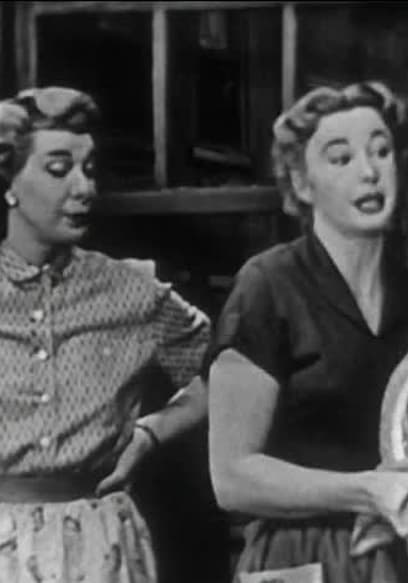
 tubitv.com
tubitv.com
The 13-minute scene that beginning at 9:30 is one of the best scenes I’ve ever seen in a TV show, movie or play. It starts with Alice trying to bring romance in their lives with a beautiful dress, a candle-lit dinner and fancy food to eat. Ralph comes home after a rough day and is totally unable to understand what Alice is doing or connect with her in any way. The scene is hilarious not only because the audience knows what Ralph doesn’t know but Alice and Ralph don’t know what’s going on in each other’s mind. Alice, heartbreakingly, tries her best to bring Ralph into the mod she’s trying to create and finally gives up and gives along speech about how difficult her life is and how disappointed she in in how her marriage worked out. Ralph responds with a speech of his own about his life and what it’s like to drive a bus all day and how much he needs to do things he likes when he gets home, even if they don’t involve Alice. It makes you feel for both of them.
They then go back to comedy with Alice and Trixie insisting that when Ralph and Ed go out, they bring their wives along. Ralph come sup with an idea for getting back the men’s freedom: keep the wives out all knight, going to various places, until they ask to be taken back home. It results in the still wide awake live watching their husbands get so tired that when they get up to dance, they wind up in each other’s arms. But its’ the power of that one long scene between Ralph and Alice that makes this one truly memorable.
One final note: A live show had to be carefully timed and Gleason was famous for having a clock in his head. If they were going too fast, Gleason would do bits of business to slow it down. If they were running late, he would cut into somebody’s lines to edit the script as they went along. The other actors had to be aware of this and go along with whatever Gleason did. An example of this comes at the 25:30 mark of this episode where Ralph has just described the things he’s had to do with Alice the past few days and Norton beginnings his own litany of things he’s had to put up with and Gleason tells him to ‘shut up’. That’s Gleason editing the show as they were performing it.
When people talk about The Honeymooners, they usually think of what is known as “The Classic 39” but there is much more to The Honeymooners than those episodes. It’s more like “The Classic 232”:
List of The Honeymooners sketches - Wikipedia
The genesis of the skits was that Gleason wanted to depict what happens before, during and after an argument between the couple, which every neighborhood had, who were always arguing but always seemed to kiss and make up. They must have been truly in love so their marriage was a perpetual ‘honeymoon’, as the introduction to the first episode says. The first couple of years, the skits were 10 minute segments of a variety show that also included Reggie Van Gleason, the Pour Soul, Joe the Bartender and other Gleason characters, as well as separate musical numbers and guest stars, etc. Then they started to experiment with longer episodes, even ones that took up the whole hour, (meaning that they lasted 35-45 minutes with the rest going to an opening monologue, commercials and closing credits). The Honeymooners didn’t appear constantly but with increasing frequency until they mostly took over the show.
The longer shows naturally had to have full-fledged plots, not just arguments, with multiple scenes. Situations that can be seen in many of the 10 minute sketches were expanded into the 45 minute plots and themes were woven into the show: Ralph is a frustrated man in a difficult job who dreams of being a big, important man or a great financial success. But his dreams never come true. His wife, Alice is always dubious of his big ideas, (which causes the arguments to still be a big part of the series), but she’s there to catch him when he falls and reassure him they still have their love and that that’s all that matters – something he has to conveniently forgot in time for the next episode. Ed Norton starts out as a wacky neighbor and becomes a full-fledged co-star and (not always willing) partner in Ralph’s schemes and misadventures.
In the Dumont days, Alice was played by gravel-voiced Pert Kelton, who seems like the battle-axe sort of wife you’d expect Ralph Kramden to wind up with. But Kelton had health problems and blacklist problems and had to be replaced when the show moved to CBS in 1952. Audrey Meadows, who had been known as a glamour girl, decided she wanted the part and had a friend take a picture of her after she just woke up to convince Gleason that she could do the role.
She created a more attractive, intelligent and capable Alice that gave Ralph a good motivation for his desire to be wealthy and important: he can’t believe that he wound up married to a woman like Alice and he wants to be a man who could deserve a wife like her. The best comedy has a dramatic backbone: it makes the characters more real. The Honeymooners was kind of a “kitchen-sink comedy”, to use a term made popular at the time for family dramas. It made this series more indelible than the more purely comedic shows oft the time.
The Jackie Gleason Show was hugely popular at the time, rising to second in the season ratings to I Love Lucy, due largely to the popularity of The Honeymooners. It’s easy to imagine the Ricardos and the Mertzes living in the same city as the Kramdens and the Nortons: it’s too bad they never met, although Gleason as Ralph appeared on what became ‘Here’s Lucy’ in 1968:
A 1950’s cross-over between the two CBS shows that defined 1950’s television would have bene fantastic but, even though both shows took place in the same city, they were filmed 3,000 miles apart so it never happened. Gleason was jealous of all the money Lucy and Desi were making by filming their show but he preferred to perform in a live theater. Gleason’s show was just broadcast, although a record was made of it because of the time difference on the west coast. Rather than having people out there get the show at 5PM on a Saturday or having the cast perform the show twice, a film camera was bolted glass-to-glass with a TV monitor and an imperfect but watchable record was made of the show for re-broadcast to the west coast. This was the norm for live New York shows but the people making television at that time had no sense of making history: they didn’t know that anyone would care about these shows years later. So they usually melted down the film after the west coast broadcast to retrieve its silver content so they could sell it and the shows were lost.
In 1955, Gleason’s old employer, DuMont came up with a machine that could both broadcast a performance and record it on film at the same time. Gleason realized that he could turn the Honeymooners into a half hour comedy and syndicate it just like I Love Lucy, but still give a theatrical performance and broadcast that live. That involved actually cutting the show down to about 25 minutes, (allowing for commercials and credits). Gleason was contracted to give CBS a full hour of programing so he created a variety show he would not star in but produce, which was given the bland title of ‘The Stage Show’ and was hosted by Gleason’s old friends the Dorsey Brothers.
A critical mistake was made by putting The Stage Show on in the first half hour, followed by The Honeymooners. NBC provided strong competition with the highly popular Perry Como show and audiences preferred that to The Stage Show and they didn’t switch back to CBS to watch The Honeymooners, which fell to 19th in the ratings, (not as high as that would be today as it was basically CBS vs. NBC with DuMont gone and ABC well back). After doing 36 episodes, (the norm in those days), in the 1955-56 season, Gleason started the 1956-57 with the same set-up but decided after 3 weeks, to return to his variety show format. The ratings were poor and they were running out of ideas for The Honeymooners, so Gleason finally gave up on the dream of getting rich through syndication.
The writers still had a few small ideas for Honeymooners episodes and one very big one. They went back to doing occasional short sketches with all of the action in the Kramden’s apartment, just the way things had begun, then a few long ones, then came out with an epic series of episodes in which the Kramdens and the Nortons take a trip to Europe, with their misadventures set to music. This consisted of eight 50-minute episodes. Then they returned to New York, (the show, of course, never left: it was all on stage), for a couple more short sketches- remakes of previous ones, before Gleason closed down the show altogether and went to Hollywood to try to become a movie star.
He had some success, (most famously what is actually a brief role as Minnesota Fats in ‘The Hustler’), then returned to do his variety show under the title “The American Scene Magazine” again in 1962, this time from Miami Beach. That’s the Jackie Gleason Show I grew up with, featuring his other famous characters. Then he re-introduced The Honeymooners in 1966 with re-makes of the 1950’s episodes, including the musical trip to Europe. Eventually they did some original episodes and ended everything with the Honeymooners taking a trip across the USA.
These episodes had a different Alice as Audrey Meadows had moved on to other things. Sue Ann Langdon didn’t get along with Gleason and so they brought in Gordon McRae’s wife, Sheila, who did. But it’s still Meadows who most people think of as ‘Alice’ and she appeared in a series of reunion shows that were done afterwards. Gleason and Carney were irreplaceable but they were also aging and had lived rather hard and they looked like old men in the 60’s episodes, which made the misfortunes that befell them somewhat less funny than in the 50’s episodes.
These shows were done on video tape, which came into use in the late 50’s. But being more than a half hour long, they weren’t really suited to syndication. The one success Gleason had in that field was that WOR in New York had decided to run what came to be known as “The Classic 39” after their late news show and new Yorkers were enjoying it. When Cable TV came on the scene and was thirsty for programing, many local cable outlets also show the Classic 39 and it eventually became a ‘cult’ hit with fans having Star-Trek-like conventions where they would show up dressed like the characters.
It was thought for many years that the other 130 fifties episodes, (besides the Classic 39), were gone forever but Gleason had kept him kinescopes, refusing to have them melted down for their silver, and had been watching them himself for years. In 1984, the existence of these kinescopes was revealed and Jackie agreed to let Viacom Entertainment and Showtime broadcast the Honeymooners segments of the old shows that hadn’t been seen since they were first broadcast 30 years before, (apparently the whole shows, including Gleason’s other characters were also available but all anyone seemed to care about were the Honeymooners). The shows were presented, not in chronological order, so fans could watch the evolution of the series, but piecemeal or by ‘themes’, both on Showtime, (which got an early boost from the release) and in subsequent VHS and DVD releases. Also, many episodes that were available were not shown because they were deemed to be poor visual or audio quality. Some were not even in Gleason’s collection, (see the Wikipedia article above). But true Honeymooner fans want to see it all and in the proper order and TUBI offers that:
The Honeymooners: Lost Episodes
I recall a friend at the time telling me that he was disappointed in the “Lost Episodes” because they didn’t have the consistent visual and audio quality of the Classic 39. But I found them perfectly watchable and was more interested in the content anyway. I actually came to prefer the look of the Lost Episodes over time. The Classic 39 do, in a sense “look better” but they also have the look and sound of something recorded a long time ago. I found my mind, watching the Lost Episodes, tended to filer out the imperfections and “see” the actual live performance. If I’m watching a 1954 episode I feel like I’ve been transported back to 1954 and am in the theater watching the live performance and I came to prefer that. Moreover the epsidoes, escepaillyf rom the 1954-55 season, were longer with more involved stories. That also seemed to have more raucous humor and be generally funnier. Maybe it the immediacy of the audience sounds vs. the more ‘distant’ sound of the Classic 39.
At any rate I came to the conclusion that the 1954-55 season – the year before the Classic 39 – was the actual height of The Honeymooners appeal and that people like my friend who demanded the ‘perfection’ of the Classic 39 were really missing a lot.
So, with another 130 episodes to choose from, which Honeymooners episode is my favorite? My favorite of the Classic 39 is ‘The 99,000 Answer’ (“Way done upon the Swanee River”) because it makes me laugh the most. But the Honeymooners episode that I find the absolute funniest is this short one from January 24, 1953, called ‘Suspense’:
The Honeymooners: Lost Episodes S01:E22 - Suspense
Hitchcock always said that the key to suspense is for the audience to know something that the characters on the screen don’t know. It’s also the key to comedy. But this episode also shows that comedy is really drama from a different perspective. Ralph’s horror at what he thinks Alice is doing is very real as is the love he displays for her – and that makes the comedy all the funnier.
But, in the end, chose one of the longer episodes, actually the last Lost Episode before the Classic 39, which illustrates the same “comedy with a dramatic backbone” in a more subtle way. ‘Boys and Girls Together’ from April 23rd, 1955. (It’s sometimes erroneously listed as May 23rd):
The Honeymooners: Lost Episodes S03:E22 - Boys and Girls Together
The wives demand that the boys spend more time with them so Ralph and Norton scheme to exhaust the girls with a wild night on the town.
The 13-minute scene that beginning at 9:30 is one of the best scenes I’ve ever seen in a TV show, movie or play. It starts with Alice trying to bring romance in their lives with a beautiful dress, a candle-lit dinner and fancy food to eat. Ralph comes home after a rough day and is totally unable to understand what Alice is doing or connect with her in any way. The scene is hilarious not only because the audience knows what Ralph doesn’t know but Alice and Ralph don’t know what’s going on in each other’s mind. Alice, heartbreakingly, tries her best to bring Ralph into the mod she’s trying to create and finally gives up and gives along speech about how difficult her life is and how disappointed she in in how her marriage worked out. Ralph responds with a speech of his own about his life and what it’s like to drive a bus all day and how much he needs to do things he likes when he gets home, even if they don’t involve Alice. It makes you feel for both of them.
They then go back to comedy with Alice and Trixie insisting that when Ralph and Ed go out, they bring their wives along. Ralph come sup with an idea for getting back the men’s freedom: keep the wives out all knight, going to various places, until they ask to be taken back home. It results in the still wide awake live watching their husbands get so tired that when they get up to dance, they wind up in each other’s arms. But its’ the power of that one long scene between Ralph and Alice that makes this one truly memorable.
One final note: A live show had to be carefully timed and Gleason was famous for having a clock in his head. If they were going too fast, Gleason would do bits of business to slow it down. If they were running late, he would cut into somebody’s lines to edit the script as they went along. The other actors had to be aware of this and go along with whatever Gleason did. An example of this comes at the 25:30 mark of this episode where Ralph has just described the things he’s had to do with Alice the past few days and Norton beginnings his own litany of things he’s had to put up with and Gleason tells him to ‘shut up’. That’s Gleason editing the show as they were performing it.
Noexcuse
Living Legend
- Joined
- Aug 14, 2011
- Messages
- 10,800
- Like
- 11,819
Since it’s the Holiday Season and since you brought up The Honeymooners, I thought I’d put this one out there. We watch it every year as part of our holiday viewing list. I love the circular nature of the story line - similar to a number of Seinfeld and Curb Your Enthusiasm episodes.
Another oldie we watch every year is the original Twilight Zone Season 2 Episode 11 Night of the Meek (can’t seem to link it here but it’s worth the watch). Stars Art Carney as a drunken department store Santa and a slew of character actors from the era including a favorite of mine Bert Mustin who looked exactly the same in whatever movie or show you ever saw him in.
Another oldie we watch every year is the original Twilight Zone Season 2 Episode 11 Night of the Meek (can’t seem to link it here but it’s worth the watch). Stars Art Carney as a drunken department store Santa and a slew of character actors from the era including a favorite of mine Bert Mustin who looked exactly the same in whatever movie or show you ever saw him in.
Last edited:
MSOrange
2020 Cali Award Winner, Regular Season Record
- Joined
- Aug 27, 2011
- Messages
- 45,405
- Like
- 110,304
I enjoy the Christmas episodes and this one for the Honeymooners is one of the best. I watch it every year also.Since it’s the Holiday Season and since you brought up The Honeymooners, I thought I’d put this one out there. We watch it every year as part of our holiday viewing list. I love the circular nature of the story line - similar to a number of Seinfeld and Curb Your Enthusiasm episodes.
Another oldie we watch every year is the original Twilight Zone Season 2 Episode 11 Night of the Meek (can’t seem to link it here but it’s worth the watch). Stars Art Carney as a drunken department store Santa and a slew of character actors from the era including a favorite of mine Bert Mustin who looked exactly the same in whatever movie or show you ever saw him in.
SWC75
Bored Historian
- Joined
- Aug 26, 2011
- Messages
- 32,600
- Like
- 62,861
Since it’s the Holiday Season and since you brought up The Honeymooners, I thought I’d put this one out there. We watch it every year as part of our holiday viewing list. I love the circular nature of the story line - similar to a number of Seinfeld and Curb Your Enthusiasm episodes.
I enjoy the Christmas episodes and this one for the Honeymooners is one of the best. I watch it every year also.
Have you guys watched the Honeymooner's "Christmas Party" episodes of 1951, 1952 and 1953, where all of Gleason's characters show up in the Kramden's apartment? Tubi has all three:
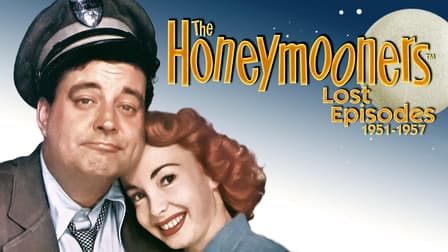
The Honeymooners: Lost Episodes
The most complete collection of the lost, early and rare Honeymooners telecasts released by star Jackie Gleason from his private vault.
SWC75
Bored Historian
- Joined
- Aug 26, 2011
- Messages
- 32,600
- Like
- 62,861
YOU’LL NEVER GET RICH 3/6/56 ‘The Court Martial’
This series eventually became known as ‘The Phil Silvers Show’ after it’s star and was also known unofficially as ‘The Bilko Show’, after the character he played, (which in turn was named after baseball player Steve Bilko, who was setting home run records in the Pacific Coast League at the time the series was being planned). I’ve always preferred the original title, taken from Irving Berlin’s ‘You’re in the Army Now’. Sgt. Ernie Bilko was in the Army, al right and the surely wanted to get rich but like Ralph Kramden, his schemes always seemed to come to naught. The show also anticipated the next decade’s ‘Hogan’s Heroes’ as Bilko kept thinking rings around the pompus commanding office of Fort Baxter. Of course the men weren’t prisoners of war but they were in the Army, which had it’s similarities. It became hugely popular with people who hated bureaucracies.
No episode exemplified this more than ‘The Court Martial’, which could be called “The Induction’. Colonel Hall wants to speed up the induction process for new recruits. They wind up doing things so quickly and paying so little attention to what they are doing they induct a chimpanzee into the army, necessitating his equally expeditious court-martial to correct the mistake.
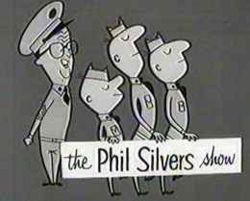
 en.wikipedia.org
en.wikipedia.org
This series eventually became known as ‘The Phil Silvers Show’ after it’s star and was also known unofficially as ‘The Bilko Show’, after the character he played, (which in turn was named after baseball player Steve Bilko, who was setting home run records in the Pacific Coast League at the time the series was being planned). I’ve always preferred the original title, taken from Irving Berlin’s ‘You’re in the Army Now’. Sgt. Ernie Bilko was in the Army, al right and the surely wanted to get rich but like Ralph Kramden, his schemes always seemed to come to naught. The show also anticipated the next decade’s ‘Hogan’s Heroes’ as Bilko kept thinking rings around the pompus commanding office of Fort Baxter. Of course the men weren’t prisoners of war but they were in the Army, which had it’s similarities. It became hugely popular with people who hated bureaucracies.
No episode exemplified this more than ‘The Court Martial’, which could be called “The Induction’. Colonel Hall wants to speed up the induction process for new recruits. They wind up doing things so quickly and paying so little attention to what they are doing they induct a chimpanzee into the army, necessitating his equally expeditious court-martial to correct the mistake.

The Phil Silvers Show - Wikipedia
Noexcuse
Living Legend
- Joined
- Aug 14, 2011
- Messages
- 10,800
- Like
- 11,819
I will check them out. I seem to remember something along those lines, probably from a reworking of the sketch on The Jackie Gleason Show during the 60's.Have you guys watched the Honeymooner's "Christmas Party" episodes of 1951, 1952 and 1953, where all of Gleason's characters show up in the Kramden's apartment? Tubi has all three:

The Honeymooners: Lost Episodes
The most complete collection of the lost, early and rare Honeymooners telecasts released by star Jackie Gleason from his private vault.tubitv.com
SWC75
Bored Historian
- Joined
- Aug 26, 2011
- Messages
- 32,600
- Like
- 62,861
THE DICK VAN DYKE SHOW 9/15/65 ‘Coast-to-Coast Big Mouth’
I’ve heard the Dick Van Dyke Show described as “the perfect sitcom”. It has quite potent comedy brew: the great talent of Dick Van Dyke as the central character a comedy writer whose life is funnier than his sketches. He works with show businesses veterans Rose Marie and Morey Amsterdam on the scripts for a show starring Alan Brady, played by Carl Reiner, a character based on Sid Caesar, the giant of 1950’s sketch comedy, for whom Reiner had worked. In fact, Reiner played the central character, Rob Petrie in the pilot for this show before Dick Van Dyke was chosen for that instead. Reiner was, in fact the head writer for the series, essentially what his TV counterpart was doing for the character Reiner played.
The most famous episode is “Coast-to-Coast Big Mouth”, in which Rob’s wife, Laura, appears on TV and accidentally reveals that the temperamental Alan Brady is bald and wears a toupee. Later she and Rob have a hugely comical confrontation with Brady and his large collection of now useless toupees in his office that is one of the funniest scenes ever. TV guide ranked this episode the 8th best TV episode of all time. A huge plus for the show is that Laura is player by the delicious Mary Tyler Moore, one of TV’s great beauties but also one of its great comic actors. She was known prior to this as a dancer and glamour girl in small parts. But she proved to be the comic equal and perfect partner for Van Dyke and this episode uses her talents to the fullest. It also uses Reiner’s as he makes a meal of the egotistical Brady.
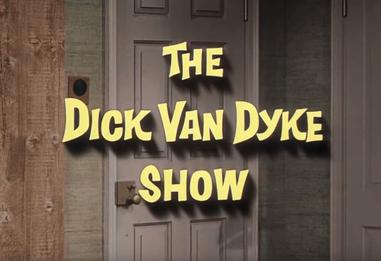
 en.wikipedia.org
en.wikipedia.org
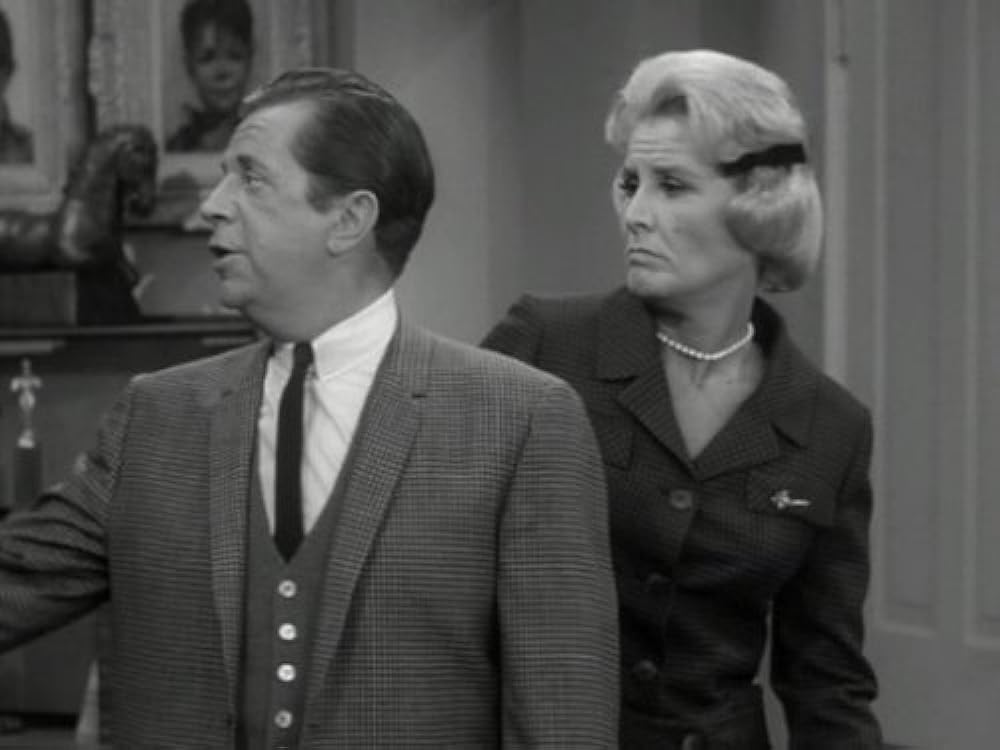
 www.imdb.com
www.imdb.com
Nearly two years before, (1/10/64), Reiner had played a character on ‘Burke’s Law’ who was proud of his collection of toupees, (10:50):
Burke's Law - S1E16 - Who Killed Snooky Martinelli?
There had also been a previous episode of the Van Dyke show that anticipated the plot of this one. It’s called "Ray Murdock's X-Ray", (1/23/63), a spoof of Mike Wallace’s interview show ‘Night Beat’ where he first made his name as a hard-hitting journalist. Rob goes on that show and admitted that a lot of his comedy ideas come from his wacky wife Laura and the silly things she does. Here Laura is the embarrassed victim and Rob the apologetic ‘big mouth’. Laura is furious until she gets a taste of her newfound fame and decides she likes it and winds up telling interviews some more stories of her ‘wackiness’. That’s a good one, too.
The Dick Van Dyke Show S02e018 Ray Murdock's X Ray
I’ve heard the Dick Van Dyke Show described as “the perfect sitcom”. It has quite potent comedy brew: the great talent of Dick Van Dyke as the central character a comedy writer whose life is funnier than his sketches. He works with show businesses veterans Rose Marie and Morey Amsterdam on the scripts for a show starring Alan Brady, played by Carl Reiner, a character based on Sid Caesar, the giant of 1950’s sketch comedy, for whom Reiner had worked. In fact, Reiner played the central character, Rob Petrie in the pilot for this show before Dick Van Dyke was chosen for that instead. Reiner was, in fact the head writer for the series, essentially what his TV counterpart was doing for the character Reiner played.
The most famous episode is “Coast-to-Coast Big Mouth”, in which Rob’s wife, Laura, appears on TV and accidentally reveals that the temperamental Alan Brady is bald and wears a toupee. Later she and Rob have a hugely comical confrontation with Brady and his large collection of now useless toupees in his office that is one of the funniest scenes ever. TV guide ranked this episode the 8th best TV episode of all time. A huge plus for the show is that Laura is player by the delicious Mary Tyler Moore, one of TV’s great beauties but also one of its great comic actors. She was known prior to this as a dancer and glamour girl in small parts. But she proved to be the comic equal and perfect partner for Van Dyke and this episode uses her talents to the fullest. It also uses Reiner’s as he makes a meal of the egotistical Brady.

The Dick Van Dyke Show - Wikipedia

"The Dick Van Dyke Show" Coast to Coast Big Mouth (TV Episode 1965) ⭐ 9.0 | Comedy, Family
30m | TV-G
Nearly two years before, (1/10/64), Reiner had played a character on ‘Burke’s Law’ who was proud of his collection of toupees, (10:50):
Burke's Law - S1E16 - Who Killed Snooky Martinelli?
There had also been a previous episode of the Van Dyke show that anticipated the plot of this one. It’s called "Ray Murdock's X-Ray", (1/23/63), a spoof of Mike Wallace’s interview show ‘Night Beat’ where he first made his name as a hard-hitting journalist. Rob goes on that show and admitted that a lot of his comedy ideas come from his wacky wife Laura and the silly things she does. Here Laura is the embarrassed victim and Rob the apologetic ‘big mouth’. Laura is furious until she gets a taste of her newfound fame and decides she likes it and winds up telling interviews some more stories of her ‘wackiness’. That’s a good one, too.
The Dick Van Dyke Show S02e018 Ray Murdock's X Ray
MSOrange
2020 Cali Award Winner, Regular Season Record
- Joined
- Aug 27, 2011
- Messages
- 45,405
- Like
- 110,304
This episode was hilarious. Good choiceTHE DICK VAN DYKE SHOW 9/15/65 ‘Coast-to-Coast Big Mouth’
I’ve heard the Dick Van Dyke Show described as “the perfect sitcom”. It has quite potent comedy brew: the great talent of Dick Van Dyke as the central character a comedy writer whose life is funnier than his sketches. He works with show businesses veterans Rose Marie and Morey Amsterdam on the scripts for a show starring Alan Brady, played by Carl Reiner, a character based on Sid Caesar, the giant of 1950’s sketch comedy, for whom Reiner had worked. In fact, Reiner played the central character, Rob Petrie in the pilot for this show before Dick Van Dyke was chosen for that instead. Reiner was, in fact the head writer for the series, essentially what his TV counterpart was doing for the character Reiner played.
The most famous episode is “Coast-to-Coast Big Mouth”, in which Rob’s wife, Laura, appears on TV and accidentally reveals that the temperamental Alan Brady is bald and wears a toupee. Later she and Rob have a hugely comical confrontation with Brady and his large collection of now useless toupees in his office that is one of the funniest scenes ever. TV guide ranked this episode the 8th best TV episode of all time. A huge plus for the show is that Laura is player by the delicious Mary Tyler Moore, one of TV’s great beauties but also one of its great comic actors. She was known prior to this as a dancer and glamour girl in small parts. But she proved to be the comic equal and perfect partner for Van Dyke and this episode uses her talents to the fullest. It also uses Reiner’s as he makes a meal of the egotistical Brady.

The Dick Van Dyke Show - Wikipedia
en.wikipedia.org

"The Dick Van Dyke Show" Coast to Coast Big Mouth (TV Episode 1965) ⭐ 9.0 | Comedy, Family
30m | TV-Gwww.imdb.com
Nearly two years before, (1/10/64), Reiner had played a character on ‘Burke’s Law’ who was proud of his collection of toupees, (10:50):
Burke's Law - S1E16 - Who Killed Snooky Martinelli?
There had also been a previous episode of the Van Dyke show that anticipated the plot of this one. It’s called "Ray Murdock's X-Ray", (1/23/63), a spoof of Mike Wallace’s interview show ‘Night Beat’ where he first made his name as a hard-hitting journalist. Rob goes on that show and admitted that a lot of his comedy ideas come from his wacky wife Laura and the silly things she does. Here Laura is the embarrassed victim and Rob the apologetic ‘big mouth’. Laura is furious until she gets a taste of her newfound fame and decides she likes it and winds up telling interviews some more stories of her ‘wackiness’. That’s a good one, too.
The Dick Van Dyke Show S02e018 Ray Murdock's X Ray
SWC75
Bored Historian
- Joined
- Aug 26, 2011
- Messages
- 32,600
- Like
- 62,861
THE MARY TYLER MOORE SHOW 10/25/75 ‘Chuckles Bites the Dust’
Mary Tyler Moore went from being a dancer and glamour girl to a respected comedienne during her run as a supporting player on ‘The Dick Van Dyke Show’. Together with her husband grant Tinker, she created a show built around her talents that debuted in 1970, four years after the Van Dyke Show ended. It proved to be another classic sitcom with many funny episodes. But, by acclamation, the outstanding episode was ‘Chuckles Bites the Dust’. Mary worked at a Minneapolis TV station where the host of the station’s kiddie show was the never-seen but often referred to Chuckles the Clown. Then came this episode, in which we learn that Chuckles has died in a tragic accident. Mary is appalled that her colleagues keep making jokes about Chuckles and the bizarre way he met his maker. Then comes the funeral and the roles are hilariously reversed. TV Guide ranked this #1 – numero uno - on its list of the 100 greatest episodes of all time. The IMDB reviewers gave it a 9.5 on the scale of 10.
It's another example of the best comedy having a dramatic backbone. They say one of the hardest things for an actor to do in a script is to laugh and cry convincingly. Come to think of it - aren't those the two things Jim Valvano asked us to do each day.
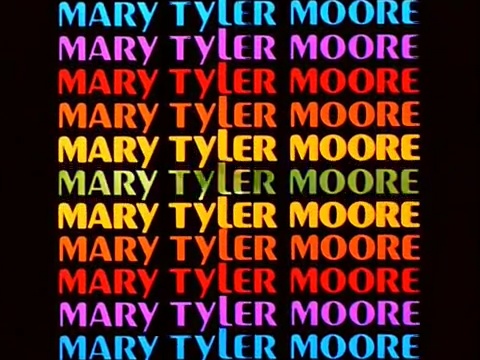
 en.wikipedia.org
en.wikipedia.org
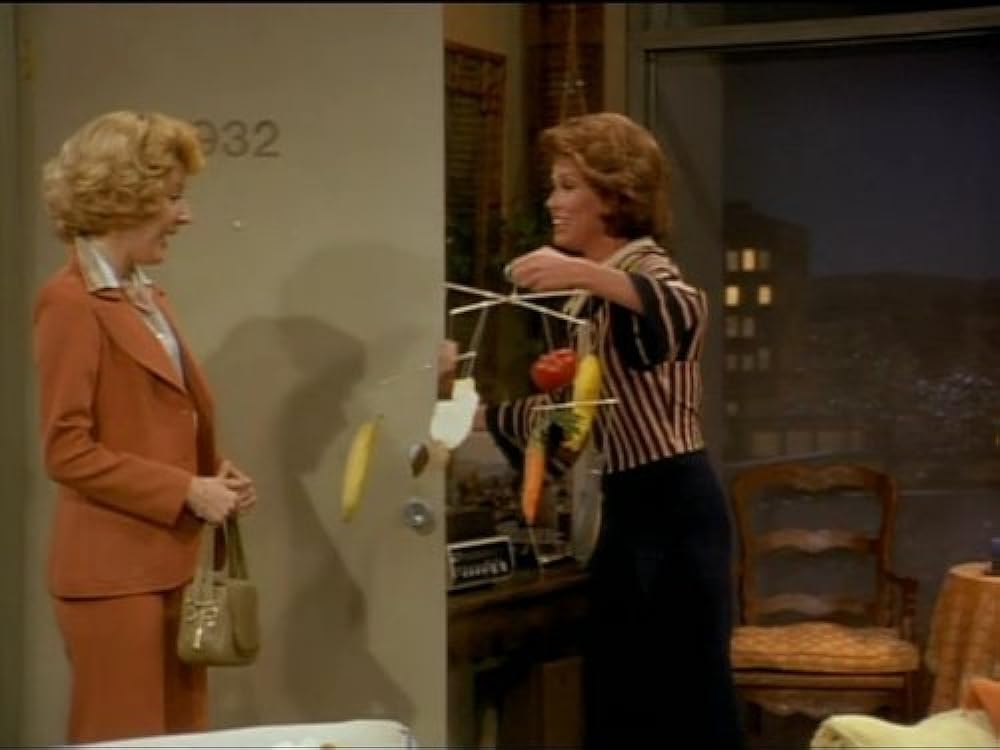
 www.imdb.com
www.imdb.com
Mary Tyler Moore went from being a dancer and glamour girl to a respected comedienne during her run as a supporting player on ‘The Dick Van Dyke Show’. Together with her husband grant Tinker, she created a show built around her talents that debuted in 1970, four years after the Van Dyke Show ended. It proved to be another classic sitcom with many funny episodes. But, by acclamation, the outstanding episode was ‘Chuckles Bites the Dust’. Mary worked at a Minneapolis TV station where the host of the station’s kiddie show was the never-seen but often referred to Chuckles the Clown. Then came this episode, in which we learn that Chuckles has died in a tragic accident. Mary is appalled that her colleagues keep making jokes about Chuckles and the bizarre way he met his maker. Then comes the funeral and the roles are hilariously reversed. TV Guide ranked this #1 – numero uno - on its list of the 100 greatest episodes of all time. The IMDB reviewers gave it a 9.5 on the scale of 10.
It's another example of the best comedy having a dramatic backbone. They say one of the hardest things for an actor to do in a script is to laugh and cry convincingly. Come to think of it - aren't those the two things Jim Valvano asked us to do each day.

The Mary Tyler Moore Show - Wikipedia

"The Mary Tyler Moore Show" Chuckles Bites the Dust (TV Episode 1975) ⭐ 9.3 | Comedy
30m | TV-PG
Last edited:
SWC75
Bored Historian
- Joined
- Aug 26, 2011
- Messages
- 32,600
- Like
- 62,861
WKRP in CINCINNATI 10/30/78 “Turkeys Away”
WKRP was almost a companion piece to “The Mary Tyler Moore Show”. It was a bout a radio station in Cincinnati instead of a TV station in Minneapolis. It had a more subtly comic newsman, ‘Les Nessman’, (Richard Sanders), who wasn’t a pompus fool but whose earnestness contrasted with the silliness going on around him. (Just say ‘Les Nessman’ over an over again and you chuckle – it sounds like ‘less newsman’. Gary Sandy plays Andy Travis, who runs things but is the anti-Lou Grant, a reasonable but harried straight man to the rest of the cast. Gordon Jump is Arthur Carleson, whose mother owns the station and named him it’s general manager. He’s called “The Big Guy”, even though he too often proves to be comically small. Frank Bonner plays Herb Tarlick “the boorish, tasteless and vain sales manager”. Howard Hessman is ‘Dr. Johnny Fever’ and Tim Reid is “Venus Flytrap”, colorful DJs at the station. Loni Anderson is Jennifer Marlowe, the nation’s receptionist but the smartest person in the room. Jane Smithers is Bailey Quarters, the new girl at the station.
The 7th show of the first season is a Thanksgiving episode but hardly a conventional one. It’s a very famous episode, (and was mentioned earlier in this thread), but I’ll not reveal any specifics as to the ending in case there are some who haven’t seen it. “The Big Guy” is feeling small because Andy ahs done such a great job of running things that Mr. Carlson seen as a figurehead. He dices to do something about it by coming up with a great idea for a Thanksgiving promotion. Unfortunately, he’s lacking a very important piece of information. The result is a disaster which Les Nessman breathlessly reports as if he were Herb Morrison describing the Hindenburg disaster. Carlson becomes both a tragic and comic figure, not unlike Ralph Kramden on his worst day. IMDB posters rated this 9.6 out of a possible 10.0, the highest rating I’ve seen.
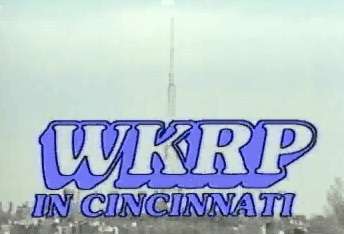
 en.wikipedia.org
en.wikipedia.org
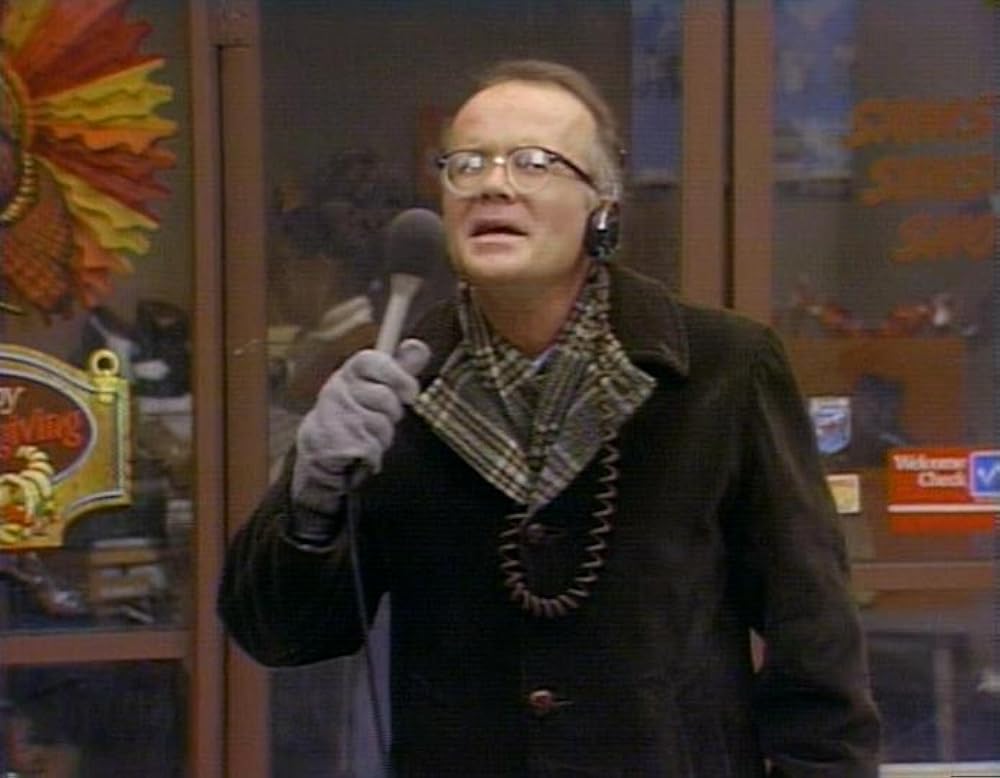
Then only free version I could find on the net is a reversed image version, (but it really doesn’t affect it’s watchability):
 www.bing.com
www.bing.com
WKRP was almost a companion piece to “The Mary Tyler Moore Show”. It was a bout a radio station in Cincinnati instead of a TV station in Minneapolis. It had a more subtly comic newsman, ‘Les Nessman’, (Richard Sanders), who wasn’t a pompus fool but whose earnestness contrasted with the silliness going on around him. (Just say ‘Les Nessman’ over an over again and you chuckle – it sounds like ‘less newsman’. Gary Sandy plays Andy Travis, who runs things but is the anti-Lou Grant, a reasonable but harried straight man to the rest of the cast. Gordon Jump is Arthur Carleson, whose mother owns the station and named him it’s general manager. He’s called “The Big Guy”, even though he too often proves to be comically small. Frank Bonner plays Herb Tarlick “the boorish, tasteless and vain sales manager”. Howard Hessman is ‘Dr. Johnny Fever’ and Tim Reid is “Venus Flytrap”, colorful DJs at the station. Loni Anderson is Jennifer Marlowe, the nation’s receptionist but the smartest person in the room. Jane Smithers is Bailey Quarters, the new girl at the station.
The 7th show of the first season is a Thanksgiving episode but hardly a conventional one. It’s a very famous episode, (and was mentioned earlier in this thread), but I’ll not reveal any specifics as to the ending in case there are some who haven’t seen it. “The Big Guy” is feeling small because Andy ahs done such a great job of running things that Mr. Carlson seen as a figurehead. He dices to do something about it by coming up with a great idea for a Thanksgiving promotion. Unfortunately, he’s lacking a very important piece of information. The result is a disaster which Les Nessman breathlessly reports as if he were Herb Morrison describing the Hindenburg disaster. Carlson becomes both a tragic and comic figure, not unlike Ralph Kramden on his worst day. IMDB posters rated this 9.6 out of a possible 10.0, the highest rating I’ve seen.

WKRP in Cincinnati - Wikipedia

Then only free version I could find on the net is a reversed image version, (but it really doesn’t affect it’s watchability):
wkrp turkeys away episode - Search Videos
orange79
Internet Sleuth
- Joined
- Aug 20, 2011
- Messages
- 40,507
- Like
- 121,205
Still one of my top 5 television moments/memories.WKRP in CINCINNATI 10/30/78 “Turkeys Away”
WKRP was almost a companion piece to “The Mary Tyler Moore Show”. It was a bout a radio station in Cincinnati instead of a TV station in Minneapolis. It had a more subtly comic newsman, ‘Les Nessman’, (Richard Sanders), who wasn’t a pompus fool but whose earnestness contrasted with the silliness going on around him. (Just say ‘Les Nessman’ over an over again and you chuckle – it sounds like ‘less newsman’. Gary Sandy plays Andy Travis, who runs things but is the anti-Lou Grant, a reasonable but harried straight man to the rest of the cast. Gordon Jump is Arthur Carleson, whose mother owns the station and named him it’s general manager. He’s called “The Big Guy”, even though he too often proves to be comically small. Frank Bonner plays Herb Tarlick “the boorish, tasteless and vain sales manager”. Howard Hessman is ‘Dr. Johnny Fever’ and Tim Reid is “Venus Flytrap”, colorful DJs at the station. Loni Anderson is Jennifer Marlowe, the nation’s receptionist but the smartest person in the room. Jane Smithers is Bailey Quarters, the new girl at the station.
The 7th show of the first season is a Thanksgiving episode but hardly a conventional one. It’s a very famous episode, (and was mentioned earlier in this thread), but I’ll not reveal any specifics as to the ending in case there are some who haven’t seen it. “The Big Guy” is feeling small because Andy ahs done such a great job of running things that Mr. Carlson seen as a figurehead. He dices to do something about it by coming up with a great idea for a Thanksgiving promotion. Unfortunately, he’s lacking a very important piece of information. The result is a disaster which Les Nessman breathlessly reports as if he were Herb Morrison describing the Hindenburg disaster. Carlson becomes both a tragic and comic figure, not unlike Ralph Kramden on his worst day. IMDB posters rated this 9.6 out of a possible 10.0, the highest rating I’ve seen.

WKRP in Cincinnati - Wikipedia
en.wikipedia.org

Then only free version I could find on the net is a reversed image version, (but it really doesn’t affect it’s watchability):
wkrp turkeys away episode - Search Videos
www.bing.com
SWC75
Bored Historian
- Joined
- Aug 26, 2011
- Messages
- 32,600
- Like
- 62,861
THE AVENGERS 10/7/67 ‘Death’s Door’
To modern audiences, The Avengers is a superhero series. To those of us who grew up in the 1960’s, it’s a British spy series full of action, humor and sex appeal. In fact, the female star of the show was called ‘Emma Peel’, a product of a producer’s demand that she have M-appeal, meaning “man appeal”. She was played by perhaps the most beautiful and sexiest actress in TV history, Diana Rigg. Her partner was the elegantly dressed, charming but ruthless John Steed, played by Patrick Macnee. 17 years ago I summarized the complicated history of this show in two posts on the IMDB:
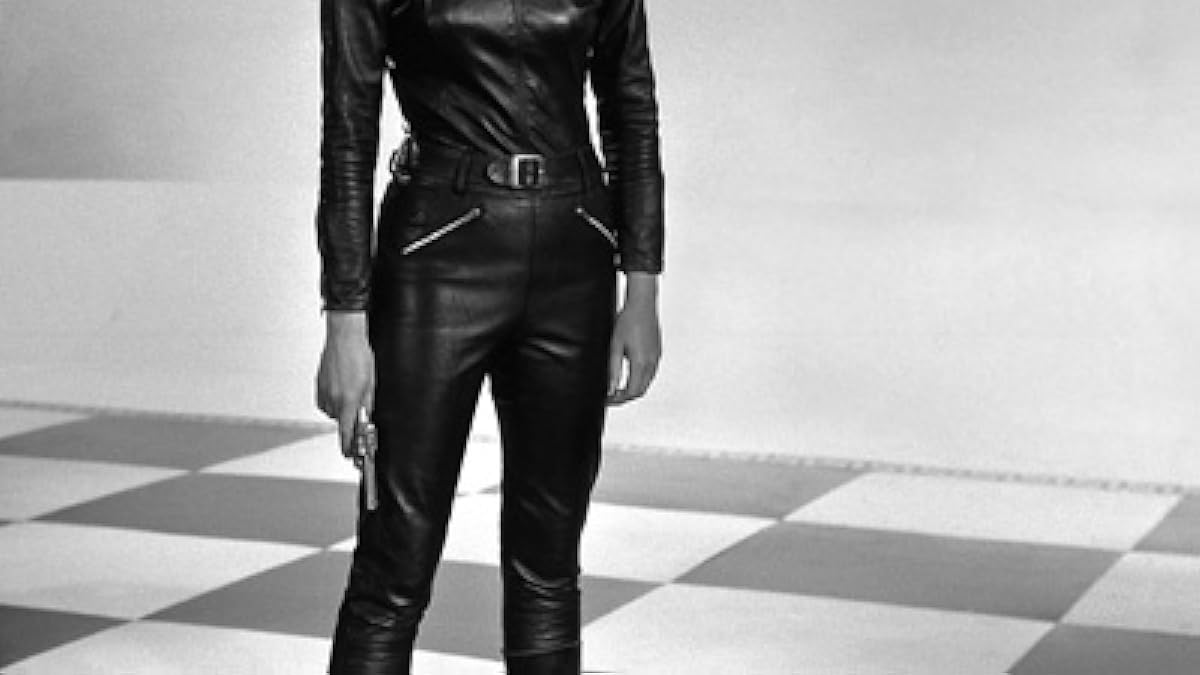

There are many famous episodes. My favorite is ‘Death’s Door’, in which a peace conference is being disrupted by forces that obviously don’t ant peace. They do it by slipping hallucinogens into key diplomats and acting out Daliesque dreams to convince them that they will be annihilated if they enter the conference room. Steed and Mrs. Peel are assigned to determine why these distinguished men suddenly panic as they approach the door to the room. It ends with the best fight scene I’ve ever seen on television, a classic that goes from room to room before the bad guys are vanquished and their plot revealed.
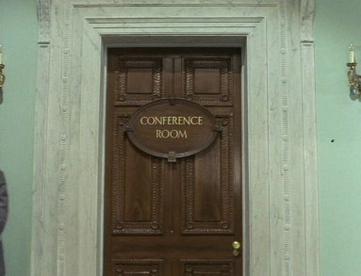
 en.wikipedia.org
en.wikipedia.org
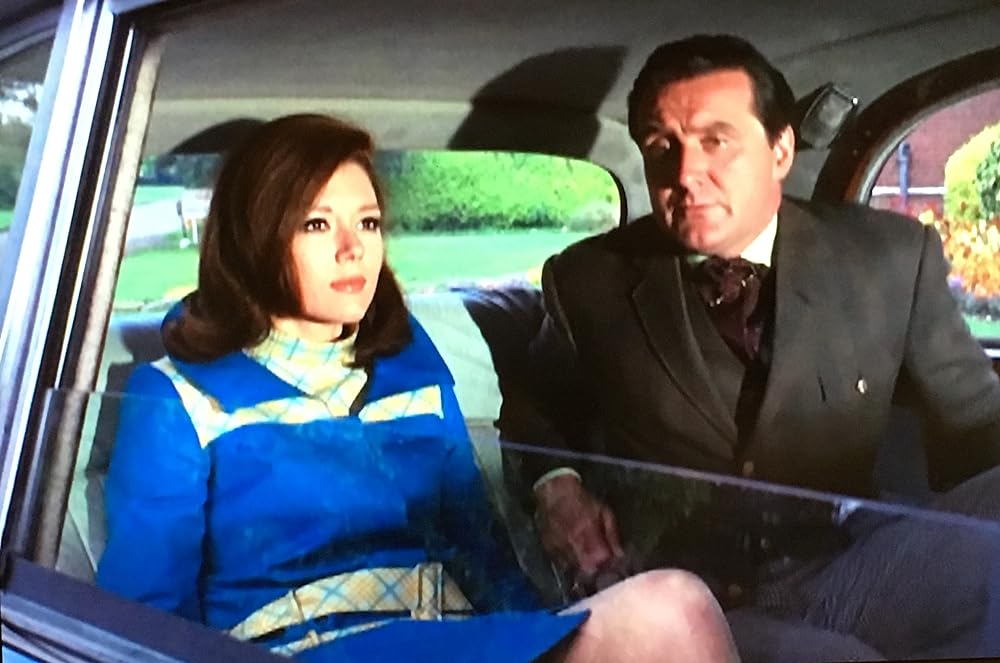
I could not find a free internet presentation of this episode but you can watch it for $1.99 on Amazon Prime: Watch The Avengers - Season 5 | Prime Video
I did find this free clip on You-Tube:
Here’s a distant view of the fight scene: The Avengers Fight Scene From Season 5 Death's Door Air Date Oct 7th 1967.
…and a long clip of the music and sound effects from the show- and from this episode:
The Avengers music 1965–68 ~ Death's Door
To modern audiences, The Avengers is a superhero series. To those of us who grew up in the 1960’s, it’s a British spy series full of action, humor and sex appeal. In fact, the female star of the show was called ‘Emma Peel’, a product of a producer’s demand that she have M-appeal, meaning “man appeal”. She was played by perhaps the most beautiful and sexiest actress in TV history, Diana Rigg. Her partner was the elegantly dressed, charming but ruthless John Steed, played by Patrick Macnee. 17 years ago I summarized the complicated history of this show in two posts on the IMDB:


There are many famous episodes. My favorite is ‘Death’s Door’, in which a peace conference is being disrupted by forces that obviously don’t ant peace. They do it by slipping hallucinogens into key diplomats and acting out Daliesque dreams to convince them that they will be annihilated if they enter the conference room. Steed and Mrs. Peel are assigned to determine why these distinguished men suddenly panic as they approach the door to the room. It ends with the best fight scene I’ve ever seen on television, a classic that goes from room to room before the bad guys are vanquished and their plot revealed.

Death's Door (The Avengers) - Wikipedia

I could not find a free internet presentation of this episode but you can watch it for $1.99 on Amazon Prime: Watch The Avengers - Season 5 | Prime Video
I did find this free clip on You-Tube:
Here’s a distant view of the fight scene: The Avengers Fight Scene From Season 5 Death's Door Air Date Oct 7th 1967.
…and a long clip of the music and sound effects from the show- and from this episode:
The Avengers music 1965–68 ~ Death's Door
SWC75
Bored Historian
- Joined
- Aug 26, 2011
- Messages
- 32,600
- Like
- 62,861
I decided to bump this thread because I'm watching an episode that belongs on the list now. It's on ION TV, (channel 4 in Spectrum in Syracuse). it's the best episode of a show that's been on this entire century: Law & Order SVU. It's "911" from 10/4/05. Olivia Benson is about to go on a date when she's called in to talk to a young girl who is imprisoned somewhere in New York City but has found a cellphone. they have to find her before her "Daddy" comes back. But evidence build that the call may be a fake. Olivia refuses to believe it.
"Law & Order: Special Victims Unit" 911 (TV Episode 2005) - IMDb
It's available on HULU. here are the reviews:
"Law & Order: Special Victims Unit" 911 (TV Episode 2005) - IMDb
On said that Mariska Hargitay deserved an 'Oscar' - for a TV show!
"Law & Order: Special Victims Unit" 911 (TV Episode 2005) - IMDb
It's available on HULU. here are the reviews:
"Law & Order: Special Victims Unit" 911 (TV Episode 2005) - IMDb
On said that Mariska Hargitay deserved an 'Oscar' - for a TV show!
Similar threads
- Replies
- 0
- Views
- 344
- Replies
- 0
- Views
- 314
- Replies
- 6
- Views
- 547
- Replies
- 39
- Views
- 3K
- Replies
- 2
- Views
- 589

